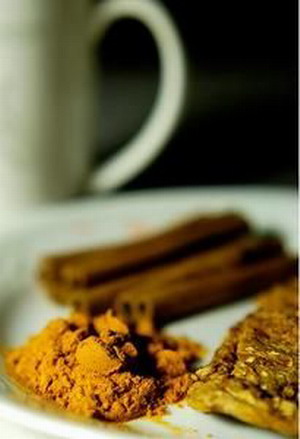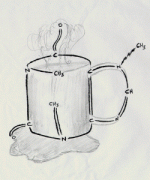Indian Coffee-the enigmatic Coffee of the mysterious country

Indian coffee with exotic spices
Our mysterious impression of India is not only its coffee, but also tea, temples, yoga, sitar, or even the more negative abnormal big cities, and so on. The reason why there are so many kinds of Indian beans on the market today must be attributed to the indomitable Indian coffee expert and importer Dr. Joseph Johns. Over the past 10 years, with eye-catching press releases, Internet reports, and all the espresso recipes he has developed to add Indian beans, he has found a broad road for Indian coffee in the boutique market.
The beans of Badnekhan Manor in India are very floral and citrus-flavored, which is somewhat similar to the characteristics of good East African plateau beans, while the beans of Jumboor Manor are bright and crisp with fruit flavor. These two beans are outliers that have not appeared in several other world competitions, and each has its own unique features, so they can be awarded the honor of a selected manor in India.
If there are too many kinds of exotic coffee in a large producing area, then perhaps large roasters and general importers and exporters do not know whether they should give this big producing area a special noun, so that customers can know whether they like the taste of the beans when they buy them. India is a big producing area that makes it impossible for people to set exclusive nouns. Unless the beans here have stable flavor performance and more and more interesting flavor changes year after year, only in this way can we form the conditions for a complete flavor characteristics of the producing area, and can sellers and customers also have a higher interest in the beans produced in this producing area. Although there are no very special characteristics of Indian beans of commercial grade, they are all very satisfying and interesting beans with a slight floral and fruity aroma, and the preparation level is obviously quite good.
But Indian beans lack a very dramatic flavor, which means that when you get a Yirgacheffe, you have to drink floral and citrus flavor; when you get a Sumatra, you have to drink a little dust. But on the other hand, the balance and cleanliness of Indian beans are very good, the acidity is properly sweet, and not too sharp, in other words, Indian beans are acceptable to many customers who do not like strong acidity. You don't have to bake it so deep that it burns both the quality and the acidity.
Important Notice :
前街咖啡 FrontStreet Coffee has moved to new addredd:
FrontStreet Coffee Address: 315,Donghua East Road,GuangZhou
Tel:020 38364473
- Prev

There are three ways to grind coffee beans.
The quality of the minced coffee has a great influence on the next cooking process. The grinding process should also match the cooking method, which is the key to extracting the best flavor from coffee beans. The cooking method of coffee powder which is in contact with hot water for a long time requires thicker particles. If the coffee powder is too fine relative to the cooking method, the coffee will be too bitter, hard and overcooked.
- Next

Fine coffee common sense the soul of caffeine coffee
The chemical structure of caffeine caffeine can be said to be the soul of coffee and the most controversial issue. Caffeine is an alkaloid in coffee beans, which can stimulate the central nervous system, stimulate the secretion of epinephrine and enhance heart function in the right dose. Although caffeine has no odor, it has a remarkable bitter taste. Although some people want to take advantage of the bitter taste of coffee
Related
- Beginners will see the "Coffee pull flower" guide!
- What is the difference between ice blog purified milk and ordinary milk coffee?
- Why is the Philippines the largest producer of crops in Liberia?
- For coffee extraction, should the fine powder be retained?
- How does extracted espresso fill pressed powder? How much strength does it take to press the powder?
- How to make jasmine cold extract coffee? Is the jasmine + latte good?
- Will this little toy really make the coffee taste better? How does Lily Drip affect coffee extraction?
- Will the action of slapping the filter cup also affect coffee extraction?
- What's the difference between powder-to-water ratio and powder-to-liquid ratio?
- What is the Ethiopian local species? What does it have to do with Heirloom native species?

